Here we are, already on Day 6 of AT32, our november cruise on the North Atlantic, and we will reach our first station tomorrow.
Today the weather is rough, as can be seen in this picture
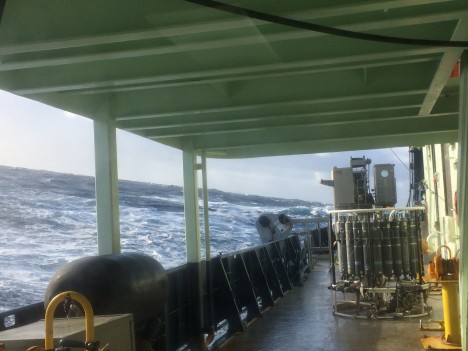
but during the first few days, we were blessed with unusually warm weather and forgiving seas. This was a bonus since those days were mostly spent securing our incubators to the aft deck, and resolving the challenge of achieving specific light levels for each one of them. We change the light inside the incubators by wrapping the incubators with different thicknesses and layers of screen mesh. Stapler, tape, and bungees in hand, we “sewed” special “tube tops” that we slipped onto and tied to the tanks. Wind and waves tried to discourage our efforts but we persisted and got better and faster with every try. You can see pictures of our work with the incubators on a blog maintained by our onboard journalist Nicole. The blog can be found here.
The reason for this exercise is that onboard incubations make it difficult to replicate the ocean vertical dimension over which plankton are mixed and thus exposed to a continuously changing light environment. Setting up different light levels, in which replicate bottles containing plankton will be incubated, is essential in assessing the effect of a chosen light level on the phytoplankton growth and grazing mortality rates we will be measuring during incubations.
No sooner was the incubator challenge resolved than another one presented itself when we first tried our filtration system. Once again, problem solving and team work got the problem fixed. Everyone’s willingness to give a hand when it’s needed is perhaps what I enjoy most when working on a ship. This is how we form bonds and gradually become a big family of scientists, with ties that often last long after our time spent together on the ship.
During our transit we have been collecting water from the flow-through system, which continuously passes surface sea water through a variety of instruments that collect data such as sea surface temperature and salinity. We’ve been analyzing the collected samples using an automated image particle analyzer known as the FlowCAM, which combines a microscope and camera, and generates images of plankton particles contained in seawater. Here are some pretty photogenic organisms:
Here is a trio of different species of Ceratium, a genus of dinoflagellate.
Below is a series of ciliates, named after the hair-like cilia they use to swim and engulf prey. Below are 2 images of tintinnid ciliates. You can see the organisms in their “shell” also called a lorica, and ingested phytoplankton cell inside. Below them is a group of ciliates that do not have a lorica.
Overall phytoplankton are not very abundant. We have seen very few diatoms, the large phytoplankton cells that usually dominate when biomass accumulates into a bloom. Yesterday we saw these perfectly spherical colonies of Phaeocystis
Tomorrow we will start our experiments with plankton. In preparation for them we have lowered the temperature in the main lab of the ship where we will be setting them up in bottles for our incubations. Plankton organisms are quite fragile and sensitive to changes in temperature so we don’t want to shock them by bringing them into an over-heated lab. There is a trade-off however: Brrr!!!! We’ve switched from wearing our t-shirts to wearing our winter coats, and dancing to our music to keep us warm!!




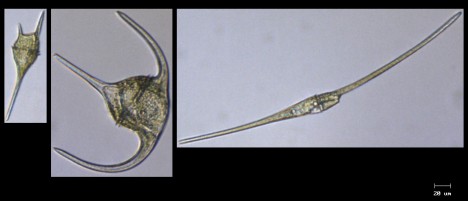
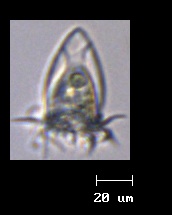

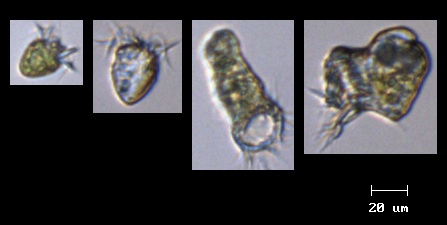

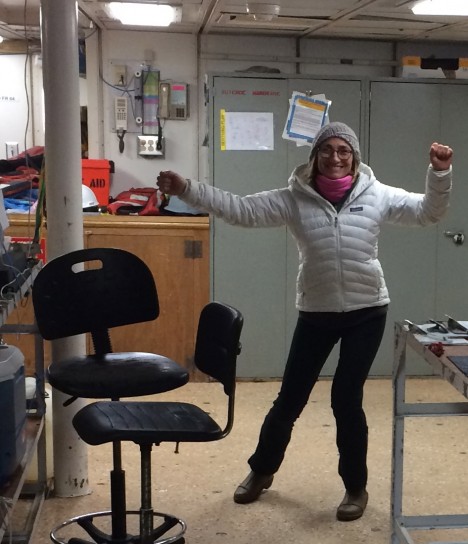
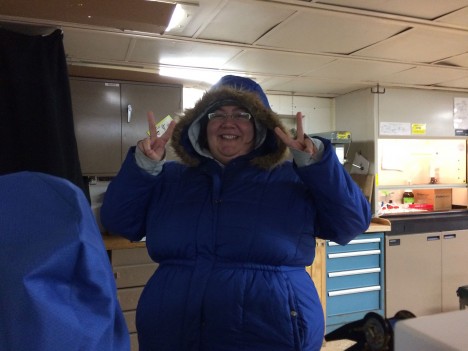
Wove what a weather, thanks for sharing the details as well as the blog
thanking you